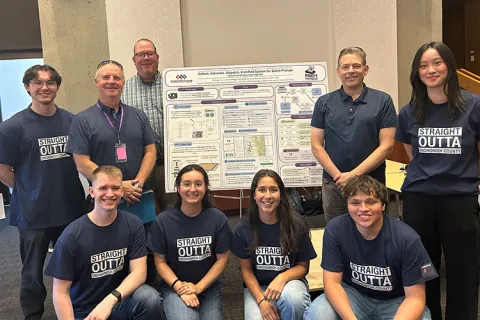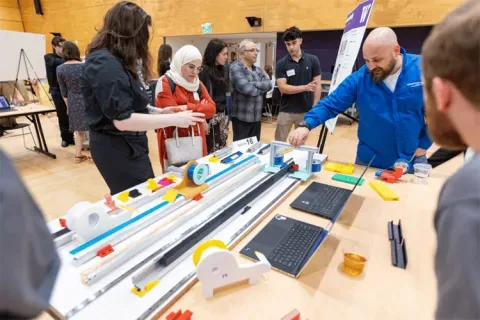UW CoMotion
In the Slot – Umpire Training Tool
The Umpire Perspective Training Tool is a system (hardware and software) that would allow for umpire strike zone evaluations to be done from the umpire’s perspective. Currently, all training is done using baseballs on a stick at slow speeds or outside the field evaluations by trainers. There is no tool available for umpires to learn the strike zone from their personal perspective. While there are numerous studies and publications discussing the batter's perspective, there are are no equivalent analyses for umpires (See Journal of Experimental Psychology: Human Perception and Performance. 1993, Vol. 19, No. 1, 3-14 for an example). This student team will work to create a training system to be used off-line and not an instant ball/strike indicator. The student team will work to create a set of glasses (not AR/VR headset) that fits under the mask that can record pitches using a simulated batter but live pitching. Seasoned umpires agree that a camera mounted on top of the umpire's head does not capture what they see during a pitch. After the session, the recording would be downloaded and run through ML/AI to determine for each pitch: bottom of zone, top of zone, and projected plate volume which the ball travels through. A tally of balls and strikes as well as a graphic showing the umpire’s bias (e.g., low strikes, outside corner etc.) could then be shown and pitches with the plate volume overlay could be reviewed. This visualization would be used as a teaching tool between trainer and student umpire. The student team could also work to collect other data, such as head movement and positioning. The design parameters this student team will work to incorporate include: * High School and above baseball field dimensions for home plate, batter's box, and pitcher's mound * 60 - 90 mph fastball using a standard baseball traveling through the strike one * Data collection device which fits within the standard gear a home plate umpire wears and does not interfere with typical umpire mechanics * Strike definition is can be adjusted according the level of play (e.g., Little League, MLB, etc.) and batter * Software analysis tool can visually display calculated strike zone overlay The outcomes this student team will work to achieve are: 1) Determine the video capture rate and equipment required to collect data during a strike zone training session; 2) Develop a prototype ML/AI system for data analysis that correctly calculates the strike zone for a given batter and can display where the pitch intersected the strike zone volume; 3) A recommended device design criteria and 3D model of a the proposed final device; 4) Recommendations for next steps; and most importantly 5) Have fun and be challenged.
Faculty Adviser(s)
Jai Jaisimha, Electrical & Computer Engineering
Related News

Mon, 10/13/2025 | UW Mechanical Engineering
Capstone collaboration leads to award
An ME capstone team received first place for its energy audit of the UW School of Social Work building.

Thu, 07/17/2025
UW engineering students develop smart ballot solution
UW engineering students develop smart technology solution to improve ballot collection for Snohomish County.

Mon, 07/07/2025 | UW Mechanical Engineering
Capstone creations
Students displayed innovative capstone design projects at the 2025 expo.

Fri, 09/20/2024 | UW Civil & Environmental Engineering
Smarter irrigation for a greener UW
A new project combines satellite data with ground sensors to conserve water and create a more sustainable campus environment.